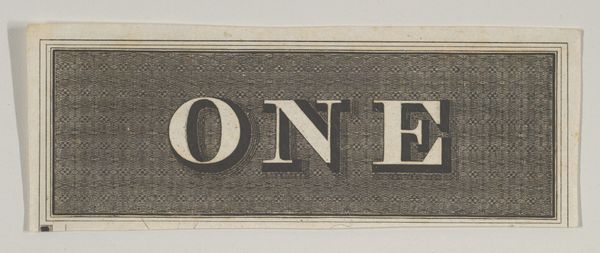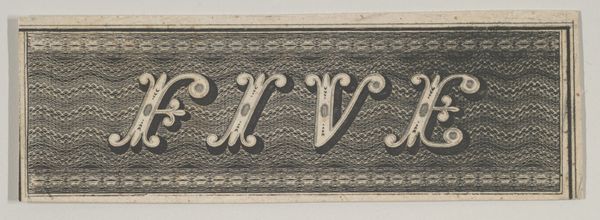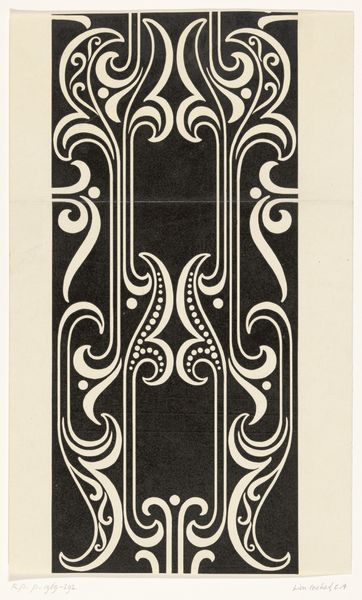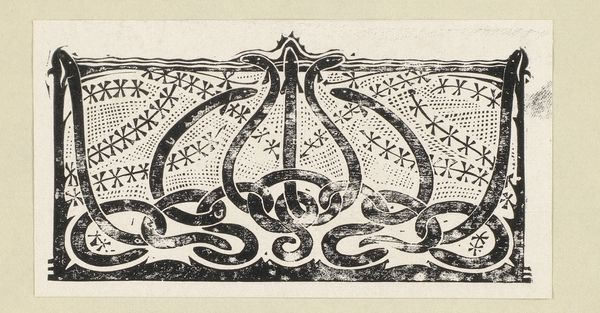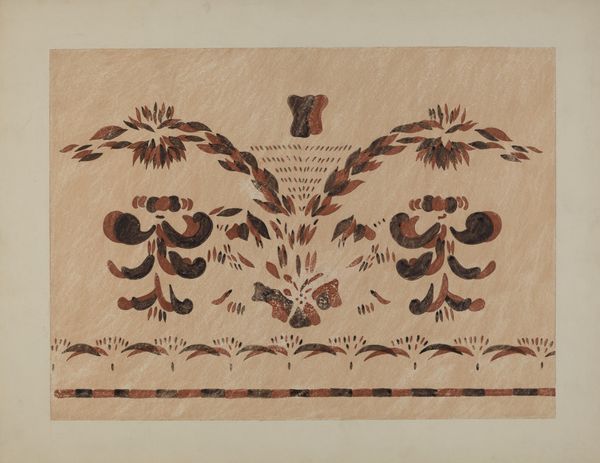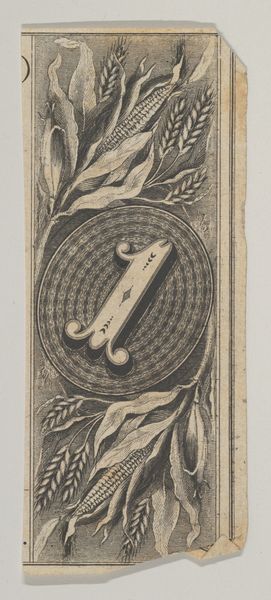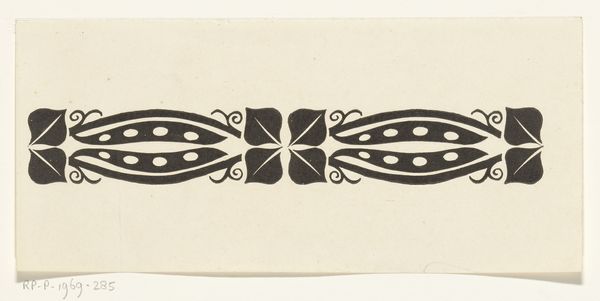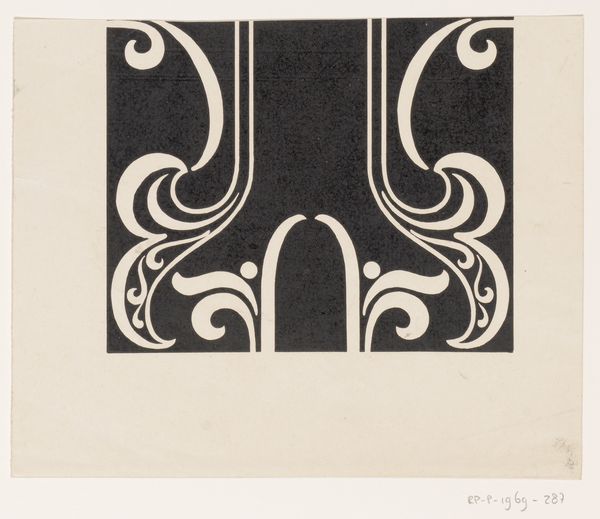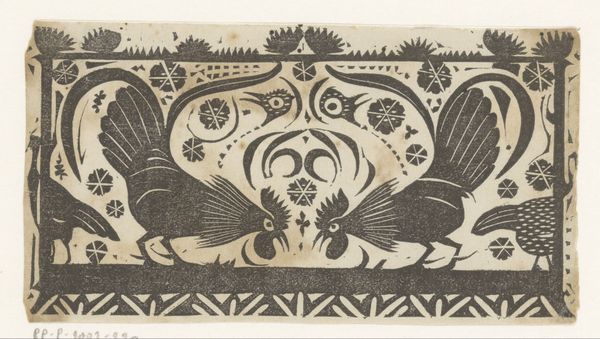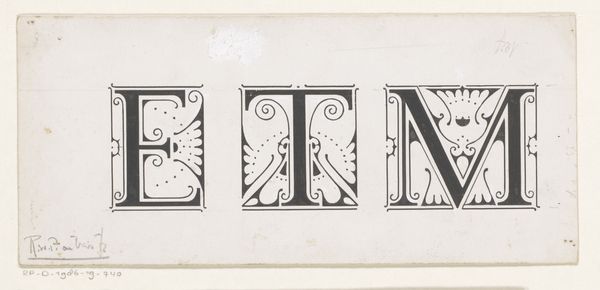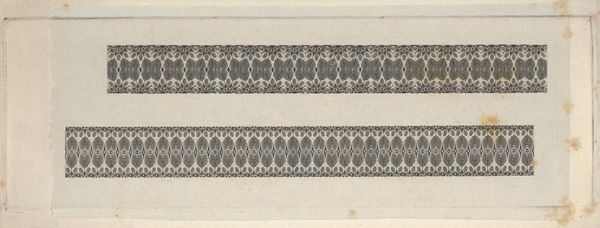
Banknote motif: the word ONE set against a rectangular band of lathe work 1819 - 1847
0:00
0:00
drawing, print, engraving
#
portrait
#
drawing
# print
#
engraving
Dimensions: sheet: 1 x 3 5/16 in. (2.6 x 8.4 cm)
Copyright: Public Domain
Editor: Here we have Cyrus Durand’s “Banknote motif: the word ONE set against a rectangular band of lathe work,” created sometime between 1819 and 1847. It's an engraving, which gives it this crisp, almost hyper-real quality. What's striking to me is the intense detail put into something so utilitarian. What catches your eye when you look at this piece? Curator: It’s the word "ONE" itself, embedded within this intricate design. It speaks volumes about power structures. Who gets to define value? What mechanisms, like currency, are used to control and distribute it? The artist places this concept – monetary value – as something both fundamental and elusive, right? It's designed to be legible, yet surrounded by complexities, like societal inequalities or capitalist exploitation. Does the overt visibility of the word and implied monetary value critique the inherent inaccessibility of that value to many? Editor: That's a fascinating perspective. I hadn't considered the implications of framing “ONE” as both accessible and somehow, obfuscated. Do you think that placing the text within this lathe work, a technique intended to prevent forgery, plays into that critique of access? Curator: Absolutely. The anti-counterfeit measures, these very elaborate details intended to protect the 'value' of this symbol also reinforce who controls the legitimate means of accessing wealth. How might the history of printing, the dissemination of information and even misinformation, shape our understanding of this seemingly simple "ONE"? Editor: That's a very provocative thought. So, you're suggesting that it's not just a banknote design, but a visual representation of the power dynamics embedded within monetary systems. I hadn't really considered how deeply connected the piece is to societal questions. Curator: Exactly. These historical objects are really cultural artifacts embedded with complex ideas about our culture’s economic realities. They show us how art reflects and refracts the political landscape. Editor: I’ll definitely think about money and value in a different light now.
Comments
No comments
Be the first to comment and join the conversation on the ultimate creative platform.
